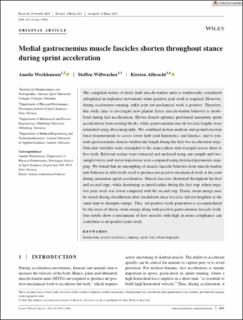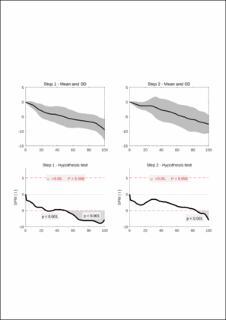| dc.contributor.author | Werkhausen, Amelie | |
| dc.contributor.author | Willwacher, Steffen | |
| dc.contributor.author | Albracht, Kirsten | |
| dc.date.accessioned | 2021-12-09T08:16:12Z | |
| dc.date.available | 2021-12-09T08:16:12Z | |
| dc.date.created | 2021-04-27T13:51:42Z | |
| dc.date.issued | 2021 | |
| dc.identifier.citation | Scandinavian Journal of Medicine & Science in Sports. 2021, 31(7), 1471-1480. | en_US |
| dc.identifier.issn | 0905-7188 | |
| dc.identifier.uri | https://hdl.handle.net/11250/2833495 | |
| dc.description | This is an open access article under the terms of the Creative Commons Attribution License, which permits use, distribution and reproduction in any medium, provided the original work is properly cited. | en_US |
| dc.description.abstract | The compliant nature of distal limb muscle-tendon units is traditionally considered suboptimal in explosive movements when positive joint work is required. However, during accelerative running, ankle joint net mechanical work is positive. Therefore, this study aims to investigate how plantar flexor muscle-tendon behavior is modulated during fast accelerations. Eleven female sprinters performed maximum sprint accelerations from starting blocks, while gastrocnemius muscle fascicle lengths were estimated using ultrasonography. We combined motion analysis and ground reaction force measurements to assess lower limb joint kinematics and kinetics, and to estimate gastrocnemius muscle-tendon unit length during the first two acceleration steps. Outcome variables were resampled to the stance phase and averaged across three to five trials. Relevant scalars were extracted and analyzed using one-sample and two-sample t-tests, and vector trajectories were compared using statistical parametric mapping. We found that an uncoupling of muscle fascicle behavior from muscle-tendon unit behavior is effectively used to produce net positive mechanical work at the joint during maximum sprint acceleration. Muscle fascicles shortened throughout the first and second steps, while shortening occurred earlier during the first step, where negative joint work was lower compared with the second step. Elastic strain energy may be stored during dorsiflexion after touchdown since fascicles did not lengthen at the same time to dissipate energy. Thus, net positive work generation is accommodated by the reuse of elastic strain energy along with positive gastrocnemius fascicle work. Our results show a mechanism of how muscles with high in-series compliance can contribute to net positive joint work. | en_US |
| dc.language.iso | eng | en_US |
| dc.subject | locomotion | en_US |
| dc.subject | muscle mechanics | en_US |
| dc.subject | running | en_US |
| dc.subject | sprint start | en_US |
| dc.subject | ultrasonography | en_US |
| dc.title | Medial gastrocnemius muscle fascicles shorten throughout stance during sprint acceleration | en_US |
| dc.type | Peer reviewed | en_US |
| dc.type | Journal article | en_US |
| dc.description.version | publishedVersion | en_US |
| dc.rights.holder | © 2021 The Authors | en_US |
| dc.source.pagenumber | 1471-1480 | en_US |
| dc.source.volume | 31 | en_US |
| dc.source.journal | Scandinavian Journal of Medicine & Science in Sports | en_US |
| dc.source.issue | 7 | en_US |
| dc.identifier.doi | 10.1111/sms.13956 | |
| dc.identifier.cristin | 1906708 | |
| dc.description.localcode | Institutt for fysisk prestasjonsevne / Department of Physical Performance | en_US |
| cristin.ispublished | true | |
| cristin.fulltext | original | |
| cristin.qualitycode | 2 | |

